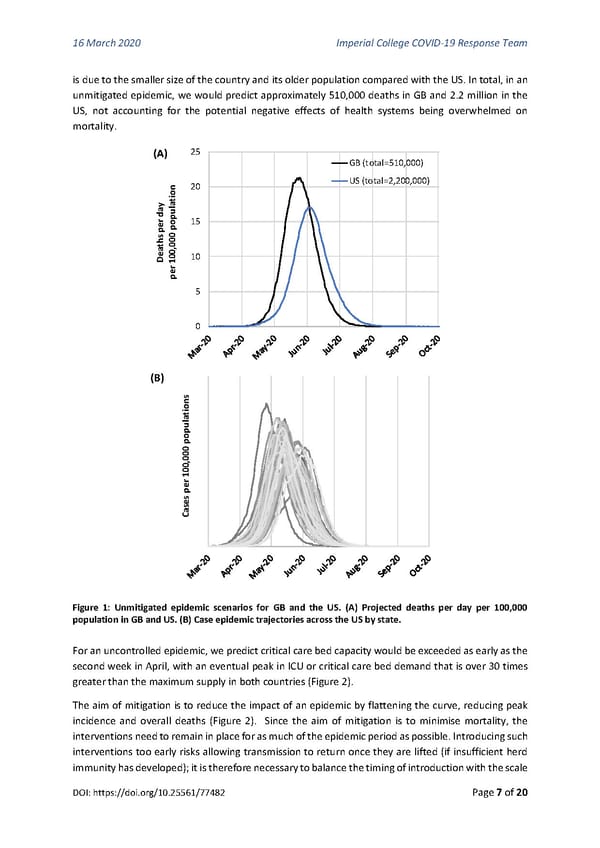16 March 2020 Imperial College COVID-19 Response Team is due to the smaller size of the country and its older population compared with the US. In total, in an unmitigated epidemic, we would predict approximately 510,000 deaths in GB and 2.2 million in the US, not accounting for the potential negative effects of health systems being overwhelmed on mortality. (A) 25 GB (total=510,000) no 20 US (total=2,200,000) y liat ar dpu e p po15 sth,000 aDe10010 er p 5 0 (B) son ilat uop p00 000, 1er pes sCa Figure 1: Unmitigated epidemic scenarios for GB and the US. (A) Projected deaths per day per 100,000 population in GB and US. (B) Case epidemic trajectories across the US by state. For an uncontrolled epidemic, we predict critical care bed capacity would be exceeded as early as the second week in April, with an eventual peak in ICU or critical care bed demand that is over 30 times greater than the maximum supply in both countries (Figure 2). The aim of mitigation is to reduce the impact of an epidemic by flattening the curve, reducing peak incidence and overall deaths (Figure 2). Since the aim of mitigation is to minimise mortality, the interventions need to remain in place for as much of the epidemic period as possible. Introducing such interventions too early risks allowing transmission to return once they are lifted (if insufficient herd immunity has developed); it is therefore necessary to balance the timing of introduction with the scale DOI: https://doi.org/10.25561/77482 Page 7 of 20
 Non-Pharmaceutical Interventions to reduce COVID-19 mortality and healthcare demand Page 6 Page 8
Non-Pharmaceutical Interventions to reduce COVID-19 mortality and healthcare demand Page 6 Page 8